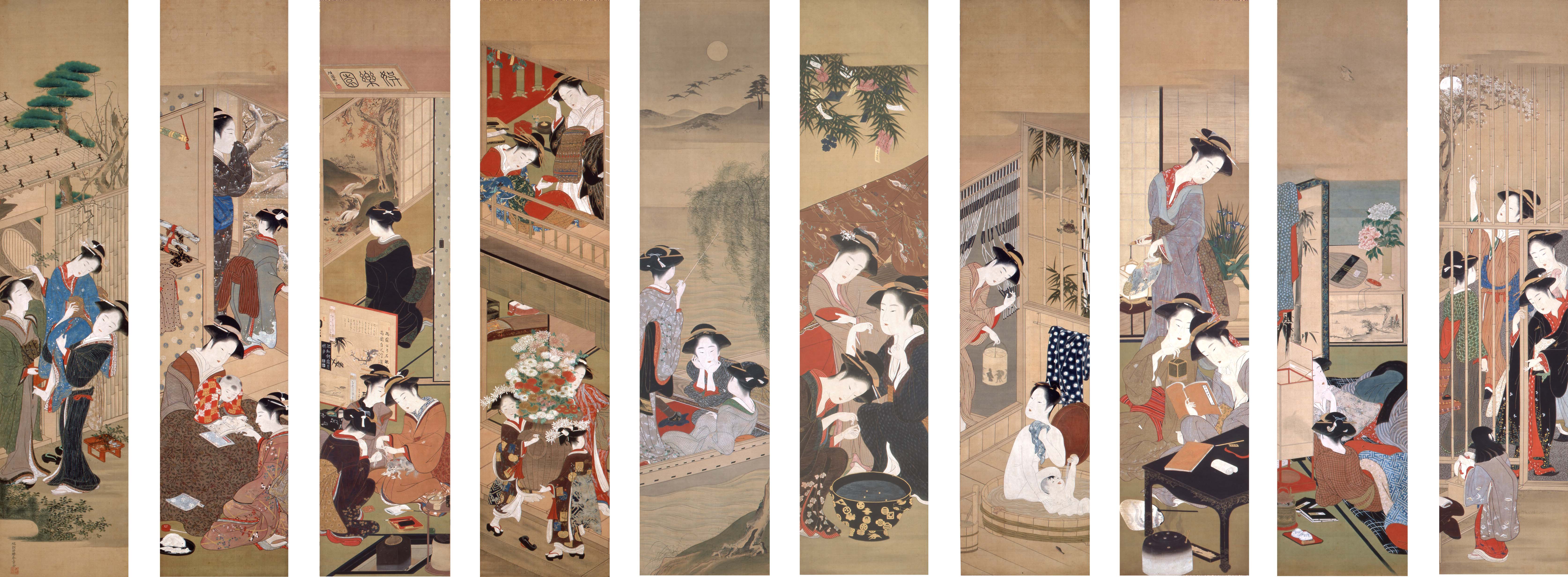Exhibitions
Lineage of Paintings of Beautiful Women from the Edo period to the Modern Age centering around Shunso, Utamaro, Shoen, and Shinsui
2017.06.09(Fri) - 2017.07.18(Tue)

Overview
The Sengoku Jidai, the age of civil wars was over and with the coming of peace, people started to enjoy their lives and many paintings showing the recreations and amusements of the people were produced. When the Edo period began, people also took a keen interest in the garments, the poses, and the facial expressions of the women in Yuraku-zu (painting of amusements), and bijinga (portrayal of beautiful women) with yujo (prostitutes) and kanban musume (poster girls), who were popular at that time, gained popularity. As the result, many unique and tasteful works were created by painters such as Katsukawa Shunsho, who depicted noble and elegant women with detailed sketches and Kitagawa Utamaro who produced bijin okubi-e (large-headed pictures of beautiful women) depicting women’s expressive faces filling the entire picture.
As the modernization in Japanese culture during the Meiji Period advanced, more pictorial and colorful works began to be produced. At the same time, along with the revival of Japanese painting tradition, traditional style bijinga paintings also appeared. Ito Shinsui depicted vivid pictures of lovely women in both woodblock prints and drawings. Also, Umemura Shoen, an important female artist of Nihonga in Kyoto, drew bijinga with the delicate and flowing lines carefully in details and in deep colors.
At this exhibition, we will display both woodblock prints and drawings featuring women from our museum collections and trace the descent of bijinga paintings. Please enjoy the enchanting bijinga paintings which the artists’ aesthetic sense and the taste or fashion of the time were reflected.
